Starr Tree Root Structures
Starr tree roots also grow normally until they reach the bottom or side
wall of the container. But then the root tip becomes pruned by exposure to
air and by dehydration.
The tree responds by activating dormant root buds close to the trunk to
produce more lateral roots. The tree also responds by making root growth
along the branch which was air pruned.
When any of these new growing roots reach the container wall, the process is
repeated, thereby creating a very fibrous root system. This root system
exists throughout the root ball. There are no circling roots at the
container wall or bottom, and no circling roots can be hidden within the root
ball.
As Starr trees are advanced in production to larger containers, root pruning
is continued without cutting or chemicals.
Starr trees have good visible trunk flare, appropriate for the species and
age of the tree, because care was taken at the initial planting of the cutting
or seeding in the first container and then again each time that tree was
replanted in a larger container as it advances in production.
The Four Stages of Starr Tree Growth
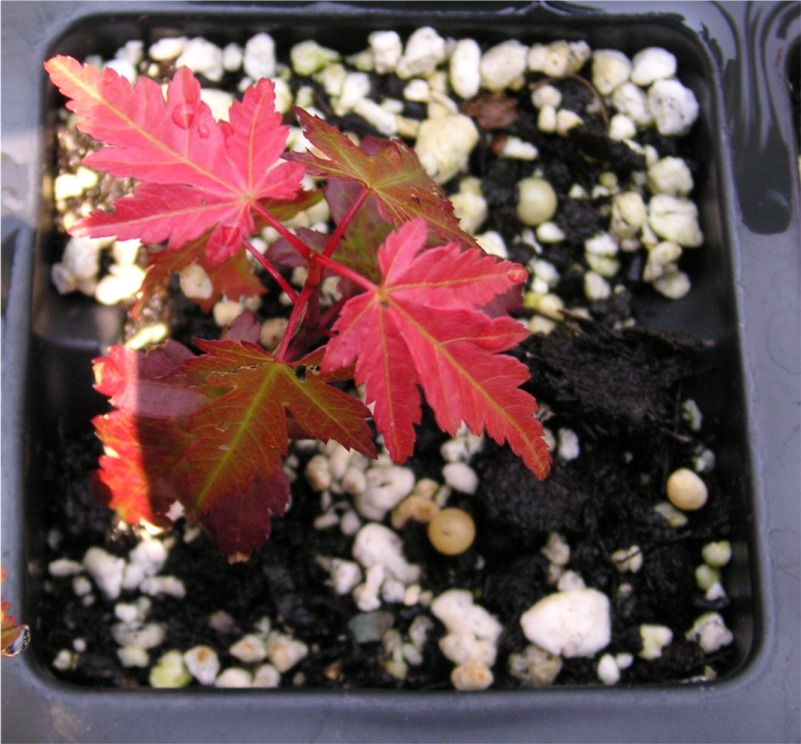
Within days after germination and before a seedling's tap root
reaches two-inches, seedlings are individually inspected, selected, and
hand transplanted into a cell of a production flat.
Cuttings are similarly individually inspected, selected and hand
transplanted.
Plants not meeting our standards for initial root development
structures, or initial stem development structures, are discarded.
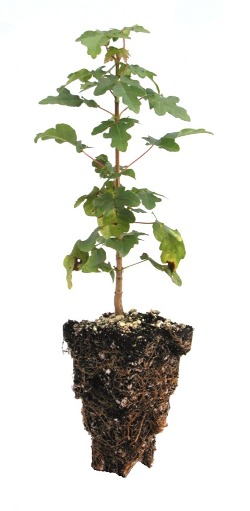

When the tap root reaches the bottom of the cell it is air pruned.
When radiating roots reach the walls of the cell, they are air
pruned.
When the plant responds by creating additional root structures which
grow to the cell bottom or wall, they are again air pruned.
The result is a root system that utilizes the entire root ball and
there are no circling roots within or at the edges of the root ball.
|
When inspection shows that root growth in the cell has produced the
desired root structures, but before the roots have fully utilized the
interior root ball, the tree is transplanted into a larger container.
The new container's space provides the additional environment needed for
continued good root growth.
This process is repeated until the tree reaches its specification size.
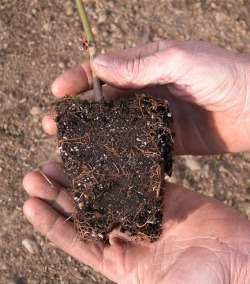
Stage 1 seedling ready to advance to Stage 2.
Please click on the above image to see more detail in a larger
picture.
|
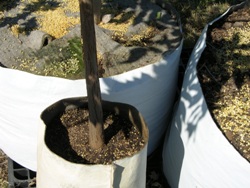
Stage 2 Production Containers.
A tree is advanced to a larger container when its roots have
almost utilized the space in the existing container.
These containers use root entanglement, at the container's fuzzy
fabric interior wall, to
create a fibrous root system.
These are above-ground containers, and other containers are used for
in-ground production.
|
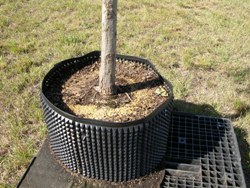
Another type of production container.
This is another above-ground container and it uses air pruning to produce fibrous roots.
|
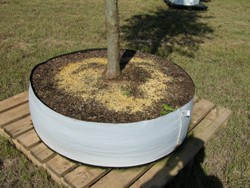
Containers can become quite large to support continued growth
for larger trees.
Please note the large width to height ratio of the
container.
This follows the proportions of tree roots in nature, and it helps
the tree to become established quickly in the landscape.
|
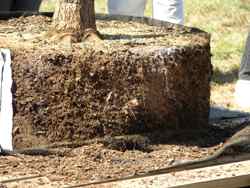
Extremely fibrous root systems are produced.
Please click on the above image to see these root structures in a
larger sized picture.
|
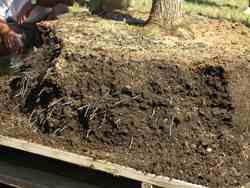
These root systems grow rapidly into new soil when the
container wall is removed.
Part of one side of this container's wall was removed, and 6 inches of
new soil was added.
In three weeks, the additional soil was probed to show the rapid new
root growth. Click on the image to see a larger picture.
|

A tree was removed from its container and loaded on a
forklift.
|
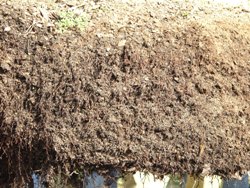
Note the fibrous roots.
Please click on the image to see more detail.
|

The root ball is still fully intact after the tree was
dropped about 5 feet off the ground.
Please examine a larger image by clicking the above image.
|
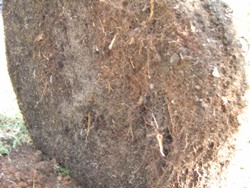
The very fibrous root system has held the root ball together.
This tree was planted and successfully became established in the
landscape.
Starr tree's root balls are so fibrous that no tied burlap or metal
support is needed to hold the root ball together.
|
When tree approaches its desired size, final production methods are
then employed to bring the tree to its delivery specification.
Delivery specification may include such items as the customer deems
desirable: delivery date, caliper size, ball weight, anticipated holding
time between delivery and planting, transportation stacking method, root ball
covering, and anticipated landscape soil conditions.

Oak, 3" caliper
|
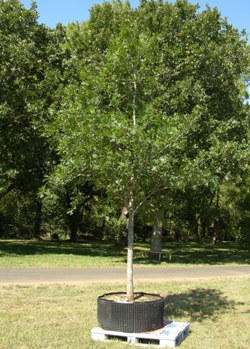
Another oak, 2.5" caliper
|
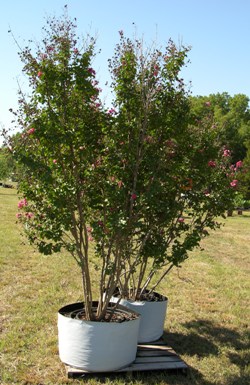
Crape Myrtle, multi-stem
|
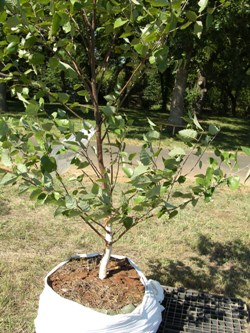
Birch, 1.5" caliper
|
The fibrous root systems in a Starr tree allow the tree to become
rapidly established in the landscape.
These fibrous roots continue to grow outward from the trunk in all
directions. Proper moisture levels must be provided during this
establishment period.
With about 6 inches of new root growth at the outside perimeter of the root
ball, the tree will no longer depend upon the roots within the root ball for
survival and the tree will have become established.

A large tree spade was used to dig a recently planted Starr
tree.
Note the new roots in the landscape soil.
Please click on the image to see a larger image.
|
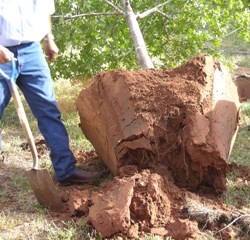
A hand shovel was used to remove side soil to show more new root
growth into the landscape soil.
Click on the above image to see more detail.
|
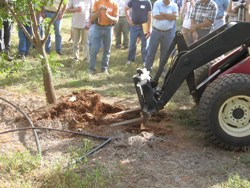
Here, forklift blades are used to extract a Starr tree planted in
the landscape soil the previous year.
|
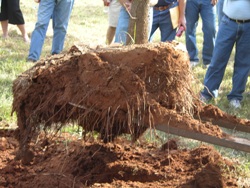
The extracted root ball shows many new roots have grown into
the landscape soil.
Because the blades entered the soil close to the right side of the
ball, roots there were severed and left in the ground.
Please click on the image to see a larger image.
|





















